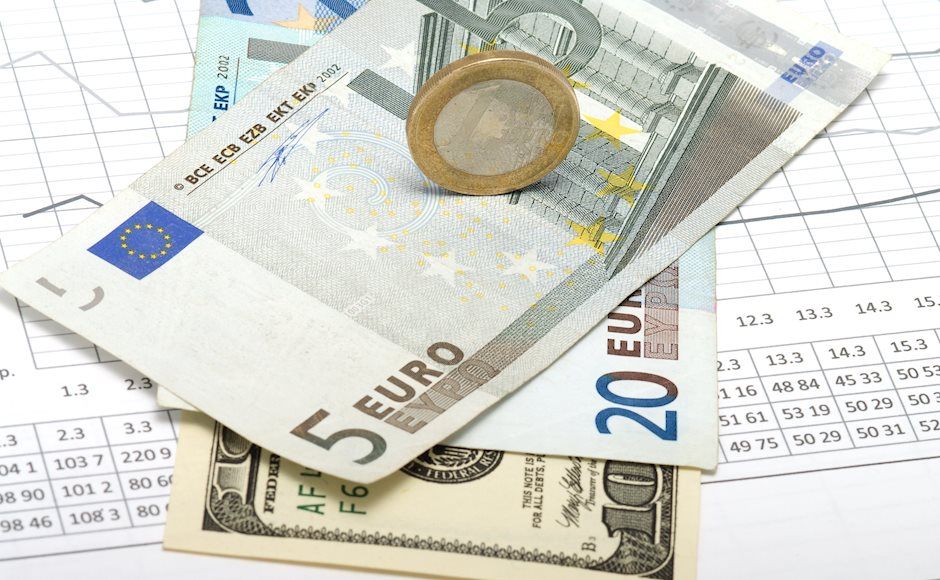EUR/USD Forecast: Euro could face strong resistance at 1.0870
- EUR/USD fluctuates above 1.0800 after posting considerable gains on Thursday.
- The pair's near-term outlook points to a bullish tilt.
- The 200-day SMA aligns a significant resistance at 1.0870.

EUR/USD gathered bullish momentum and closed in positive territory above 1.0800 on Thursday, snapping a three-day losing streak in the process. Although the pair struggles to extend its recovery early Friday, the near-term technical outlook suggests that sellers remain on the sidelines for the time being.
Euro PRICE This week
The table below shows the percentage change of Euro (EUR) against listed major currencies this week. Euro was the weakest against the US Dollar.
| USD | EUR | GBP | JPY | CAD | AUD | NZD | CHF | |
|---|---|---|---|---|---|---|---|---|
| USD | 0.38% | 0.62% | 1.64% | 0.25% | 1.21% | 1.18% | 0.28% | |
| EUR | -0.38% | 0.16% | 1.17% | -0.07% | 0.80% | 0.69% | -0.20% | |
| GBP | -0.62% | -0.16% | 1.01% | -0.35% | 0.61% | 0.56% | -0.40% | |
| JPY | -1.64% | -1.17% | -1.01% | -1.36% | -0.42% | -0.38% | -1.40% | |
| CAD | -0.25% | 0.07% | 0.35% | 1.36% | 0.86% | 0.98% | -0.12% | |
| AUD | -1.21% | -0.80% | -0.61% | 0.42% | -0.86% | 0.04% | -1.01% | |
| NZD | -1.18% | -0.69% | -0.56% | 0.38% | -0.98% | -0.04% | -0.96% | |
| CHF | -0.28% | 0.20% | 0.40% | 1.40% | 0.12% | 1.01% | 0.96% |
The heat map shows percentage changes of major currencies against each other. The base currency is picked from the left column, while the quote currency is picked from the top row. For example, if you pick the Euro from the left column and move along the horizontal line to the US Dollar, the percentage change displayed in the box will represent EUR (base)/USD (quote).
The improving risk mood, combined with a pullback in the US Treasury bond yields, caused the US Dollar (USD) to lose interest on Thursday, allowing EUR/USD to stretch higher. Early Friday, US stock index futures trade virtually unchanged on the day, pointing to a neutral risk stance and limiting the pair's upside.
In the second half of the day, the US economic calendar will feature Durable Goods Orders data for September. Markets expect a 1% decline on a monthly basis. A positive reading could support the USD with the immediate reaction, while a bigger-than-forecast drop could have the opposite impact on the currency's valuation. Nevertheless, the market reaction is unlikely to be long-lasting, or significant enough to provide directional momentum to EUR/USD.
Investors will also pay close attention to changes in risk perception heading into the weekend. In case risk flows continue to dominate the action in financial markets, the USD could stay on the back foot.
EUR/USD Technical Analysis
EUR/USD broke out of the descending regression channel and stabilized above the upper limit of the channel. Additionally, the Relative Strength Index (RSI) indicator on the 4-hour chart rose above 50 for the first time in nearly a month, reflecting a bullish tilt in the near-term outlook.
The 50-period Simple Moving Average (SMA) aligns as interim resistance at 1.0835 before 1.0870 (200-day SMA). In case EUR/USD rises above the latter and stabilizes there, technical buyers could show interest and open the door for another leg higher toward 1.0930, where the 100-day SMA is located.
Looking south, supports could be located at 1.0800 (static level), 1.0760 (static level) and 1.0700 (static level, round level).
Euro FAQs
The Euro is the currency for the 19 European Union countries that belong to the Eurozone. It is the second most heavily traded currency in the world behind the US Dollar. In 2022, it accounted for 31% of all foreign exchange transactions, with an average daily turnover of over $2.2 trillion a day. EUR/USD is the most heavily traded currency pair in the world, accounting for an estimated 30% off all transactions, followed by EUR/JPY (4%), EUR/GBP (3%) and EUR/AUD (2%).
The European Central Bank (ECB) in Frankfurt, Germany, is the reserve bank for the Eurozone. The ECB sets interest rates and manages monetary policy. The ECB’s primary mandate is to maintain price stability, which means either controlling inflation or stimulating growth. Its primary tool is the raising or lowering of interest rates. Relatively high interest rates – or the expectation of higher rates – will usually benefit the Euro and vice versa. The ECB Governing Council makes monetary policy decisions at meetings held eight times a year. Decisions are made by heads of the Eurozone national banks and six permanent members, including the President of the ECB, Christine Lagarde.
Eurozone inflation data, measured by the Harmonized Index of Consumer Prices (HICP), is an important econometric for the Euro. If inflation rises more than expected, especially if above the ECB’s 2% target, it obliges the ECB to raise interest rates to bring it back under control. Relatively high interest rates compared to its counterparts will usually benefit the Euro, as it makes the region more attractive as a place for global investors to park their money.
Data releases gauge the health of the economy and can impact on the Euro. Indicators such as GDP, Manufacturing and Services PMIs, employment, and consumer sentiment surveys can all influence the direction of the single currency. A strong economy is good for the Euro. Not only does it attract more foreign investment but it may encourage the ECB to put up interest rates, which will directly strengthen the Euro. Otherwise, if economic data is weak, the Euro is likely to fall. Economic data for the four largest economies in the euro area (Germany, France, Italy and Spain) are especially significant, as they account for 75% of the Eurozone’s economy.
Another significant data release for the Euro is the Trade Balance. This indicator measures the difference between what a country earns from its exports and what it spends on imports over a given period. If a country produces highly sought after exports then its currency will gain in value purely from the extra demand created from foreign buyers seeking to purchase these goods. Therefore, a positive net Trade Balance strengthens a currency and vice versa for a negative balance.
Premium
You have reached your limit of 3 free articles for this month.
Start your subscription and get access to all our original articles.
Author

Eren Sengezer
FXStreet
As an economist at heart, Eren Sengezer specializes in the assessment of the short-term and long-term impacts of macroeconomic data, central bank policies and political developments on financial assets.


















